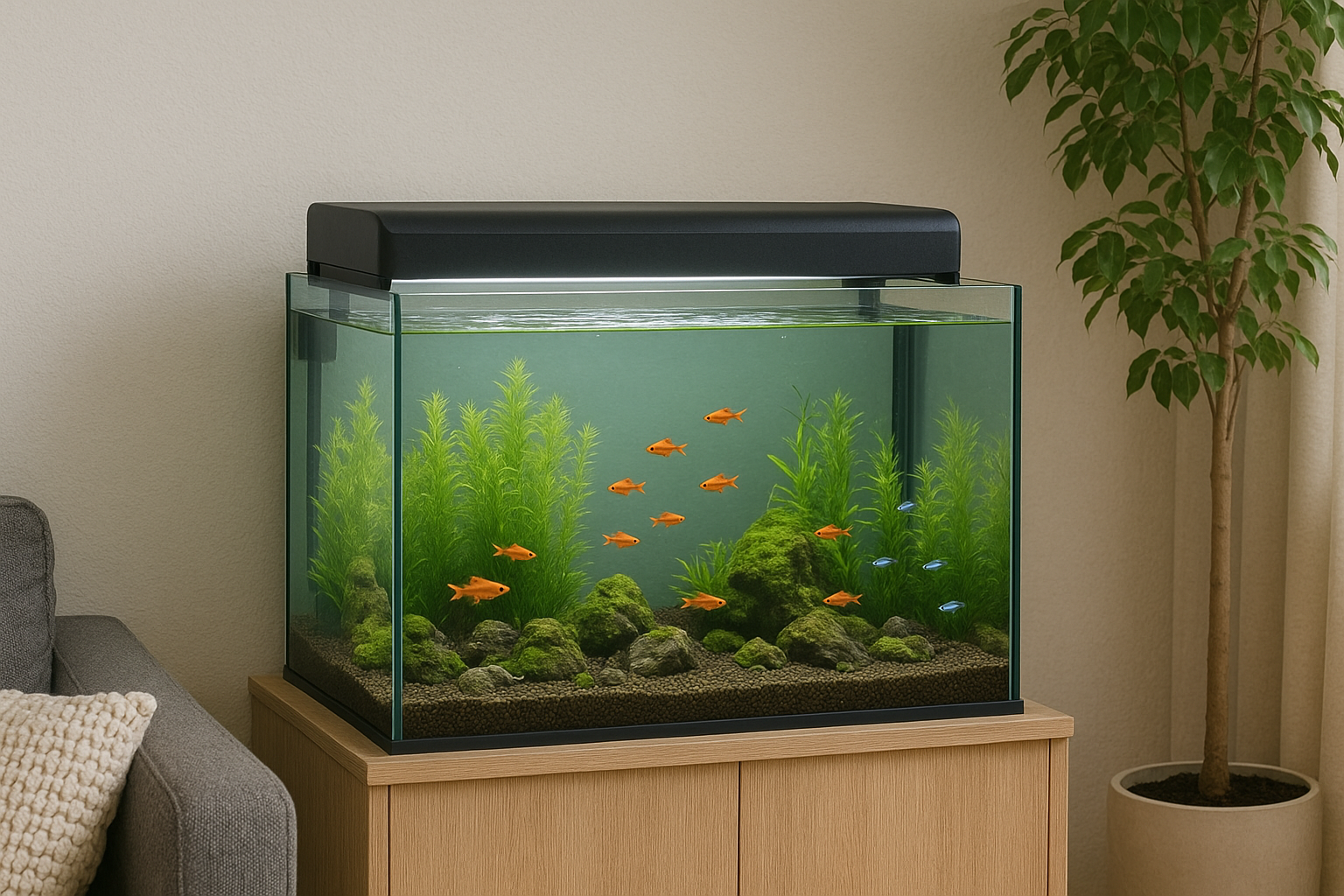Keeping fish is not only a hobby but also a relaxing lifestyle. A suitable aquarium is the starting point of the entire aquatic world. With so many different types of aquariums on the market—from small desktop tanks to large display tanks—how do you choose the one that best fits your needs? Here’s a detailed and practical guide.
1. Define Your Fishkeeping Goals
1. The type of fish determines the choice of aquarium
- Tropical fish: Require stable water temperature and proper lighting, best with a heater and LED light.
- Goldfish: Less sensitive to water temperature but produce more waste, so they need a large tank with strong filtration.
- Shrimps/Small fish: Can thrive in smaller tanks but demand very clean water conditions.
2. The purpose of fishkeeping
- Decorative: Simple setup, a few fish, a starter kit aquarium works fine.
- Eco-system: Plants + fish + filtration system, more complex, requires a larger tank and professional equipment.
- Aquascaping: For advanced hobbyists who aim for visual appeal, requiring proper planning of lighting, plants, and layout.
2. Aquarium Size and Placement
1. Choosing the right size
- Small (under 30 cm): Suitable for a couple of small fish or shrimps, convenient but water quality fluctuates easily.
- Medium (30–60 cm): Highly recommended for beginners; moderate water volume helps stabilize conditions.
- Large (over 60 cm): Perfect for goldfish, koi, or groups of tropical fish; great viewing experience but requires more maintenance.
2. Placement considerations
- Avoid direct sunlight: Prevents unstable temperature and algae growth.
- Stay away from heat sources and kitchens: Keeps the water clean.
- Check weight capacity: A full tank can be very heavy; large aquariums should be placed on a sturdy stand or dedicated cabinet.
3. Aquarium Materials and Styles
- Glass tanks: Durable, clear, and scratch-resistant—the most common choice.
- Ultra-clear glass: Higher transparency, ideal for premium displays.
- Acrylic tanks: Lightweight and versatile in design but prone to scratches.
- Starter kits: Include lighting and filtration, the best option for beginners.
4. Filtration and Circulation Systems
The filtration system determines the health of your fish. Common types include:
- Top filter: Budget-friendly, suitable for small tanks.
- Internal filter: Easy to install, good for small to medium tanks.
- External filter: Provides the best filtration, ideal for medium to large aquariums or aquascaping tanks.
Tip: The filter’s flow rate should be 3–5 times the total water volume of your tank to maintain proper circulation.
5. Lighting and Temperature Control
- Lighting: LED lights are the most popular choice; they enhance the viewing experience and support plant growth.
- Temperature control: Tropical fish need heaters to maintain 24–28°C; coldwater species like goldfish or koi don’t.
- Timers: Keep lights on for 6–8 hours a day to avoid excessive algae growth.
6. Budget and Long-term Maintenance
- Budgeting: The tank is only the start—filters, lighting, heaters, decorations, and fish will add to the cost.
-
Maintenance:
- Change 20–30% of the water weekly to keep it clean.
- Clean filter media regularly to prevent clogging.
- Monitor your fish’s condition to prevent disease spread.
7. Purchase Recommendations
- Beginners: 30–60 cm starter kits with built-in filtration and lighting.
- Intermediate hobbyists: 60–120 cm aquariums with external filters and professional lighting, suitable for aquascaping or community tanks.
- Advanced aquarists: Custom aquariums tailored to specific design and species needs.
Final Thoughts
Choosing the right aquarium means balancing the type of fish, tank size and placement, materials, filtration system, budget, and maintenance. For beginners, a medium-sized starter kit is the best starting point. For experienced fishkeepers, a larger custom tank offers more creativity and visual enjoyment.
Keeping fish is a joy, but it also comes with responsibility. Choosing the right aquarium is the very first step toward success.



